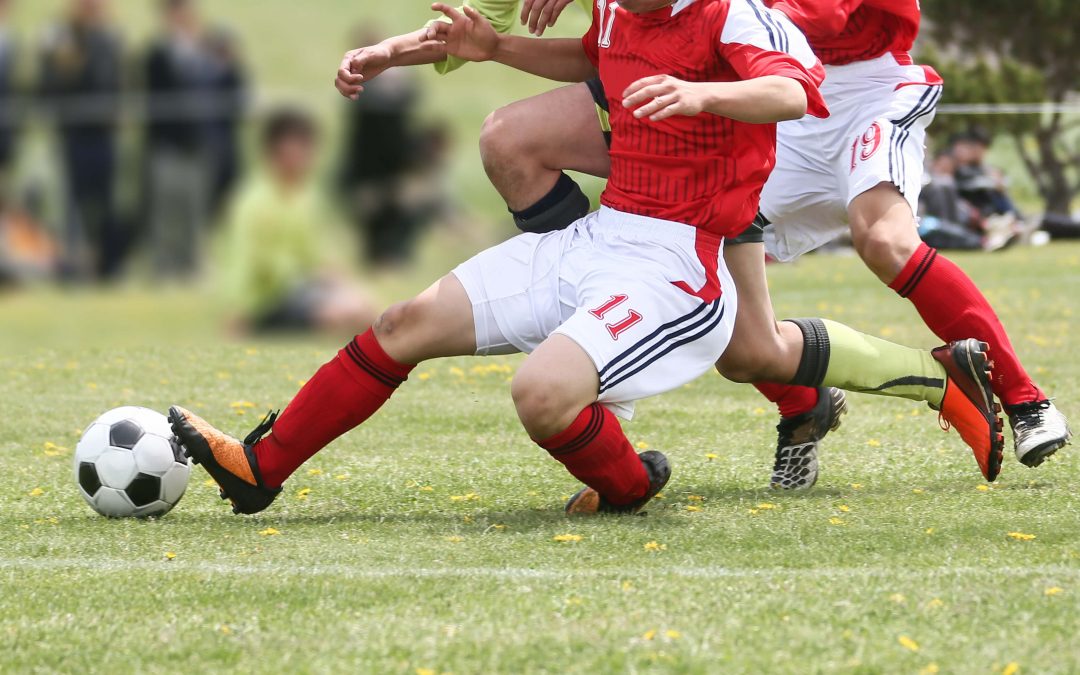A torn anterior cruciate ligament (ACL) is a painful, often debilitating injury, which may require surgery.
When the injury occurs, many patients fear the worst; one of the first questions that surgeons are asked is “How long will I be out of my normal routine?”
Every patient is different and every injury is treated as such, which means that your surgeon will provide recommendations and rehabilitation that is specific to your lifestyle and injury.
What Causes an ACL Injury?
ACL tears are a common sports-related injury, which is most often a twisting or decelaration type injury; for example, it may occur whilst changing direction in netball or coming down from a mark in football.
Most ACL tears are non-contact, which means the injury occurred without the athlete or person coming into contact with an opponent or other person.
What is Involved in ACL Reconstruction?
ACL surgery is performed using arthroscopic surgery and replaces your torn ACL with a graft ligament, usually taken from one of your hamstring tendons.
For more information about ACL surgery with Dr Jens Buelow, please click through to read the Anterior Cruciate Ligament Surgery page on the website.
After the Surgery
If you do undergo an ACL reconstruction, you will be in hospital for 1-2 nights, at the discretion of your surgeon.
Post-operative care and rehabilitation are an important step post-procedure to ensure that patients regain function without jeopardising the graft ligament.
The information below is a general guide to ACL recovery post surgery. You should seek medical advice from your doctor or surgeon for expectations and rehabilitation unique to your circumstances.
Immediately After Surgery – In Hospital
After undergoing ACL surgery and returning to the hospital room, the patient will begin their first exercises in hospital under the guidance of a physiotherapist. In hospital, the patient will also begin to mobilise partial or full weight bearing while using crutches.
First Week Post Surgery
As the pain decreases from the surgery, the patient may become more mobile, getting rid of crutches to get around. As part of the ACL recovery, the patient might be in a knee brace and will need to follow his physio-implemented exercise plan, which may include mobilisation exercises and strengthening exercises for calf, hamstring and quadriceps muscles.
Pain and swelling should begin to reduce, but regular icing, elevation and anti-inflammatory tablets will be useful tools in helping the patient’s recovery.
The key thing to remember for the first week to 10 days of ACL recovery is to rest, rest and rest!
Week 1-2
At this time, the patient should be booked in for a post-op review with Dr Buelow, where he can assess any progress and recovery.
Depending on the patient’s stage of recovery, they will be encouraged to bear his weight or walk without the support of crutches. More movement is encouraged to help them regain knee extension; however, no forceful, sudden or painful activity is advised.
Weeks 2-6
Depending on which leg underwent surgery, as well as how well you are recovering through rehabilitation, you may be clear to drive by two weeks post-surgery. However, this depends on whether you are off crutches and whether the muscles are functional and mobile enough to allow enough movement for driving and be in control of the vehicle.
Returning to work also depends on a number of factors, such as what job it is and how well you are recovering. If you are a tradie in a physical job, you may not return to work as quickly as someone who works a sedentary job in an office.
For patients who have strenuous or highly physical jobs, a return to work may occur after 3 months, while those with sedentary office jobs may be cleared to return within two weeks.
At 3-4 weeks swimming and stationary cycling are usually encouraged. Around the six-week mark, the patient may be able to stand for long periods of time without pain or requiring support.
Weeks 6-12
During this time, the patient will need to begin more regular physiotherapy visits, as well as continue with any physio-recommended exercises, which may include cycling, hydrotherapy and hip-strengthening exercises.
Around the three-month mark, the patient will work to improve the strength of their quadriceps and hamstrings with light resistance training – strengthening these muscles will help to protect the knee joint.
4-7 Months Post-Surgery
During this phase of the recovery, the patient should experience a progression in strength and mobility in their knee. The goal here is to ensure that the patient can safely return to sports with the best possible range of motion, with some patients able to jog around the four-month mark.
If their recovery is tracking well, they may be able to enjoy a range of low impact sports around four to five months post-surgery, such as outdoor cycling. To do so, they must not be experiencing any pain or any limited range of motion, and they must not have any soft tissue complaints.
To reduce the risk of further injury to their ACL, rehabilitation will begin to incorporate agility and landing exercises.
8+ Months Post-Surgery
From this point, the patient may be cleared to resume normal sports activity, as long as they passes their sport assessment, which includes isokinetic strength and hop tests.
Visit Dr Buelow for Your ACL Reconstruction
When it comes to recovering from a significant injury and subsequent surgery, you need to remember to take things slow.
It can be frustrating to have limited movement, but it is worthwhile remembering that by taking the time your body needs to recover, you give yourself a better chance at returning to your best.
If you have sustained an ACL tear and you would like to discuss your options for potential surgery and recovery, chat with Dr Jens Buelow today.
Contact Dr Jens Buelow’s office today on (08) 9212 4200 to find out your suitability for ACL surgery.

